SamuraiSam
Extraction Technician
I'm so glad I've been growing a forest of bamboo. I can't wait to learn how to make charcoal for my Okin.
Just check the diameter! That's the most critical part, go start hunting for the optimal size and cut it down to start drying it!I'm so glad I've been growing a forest of bamboo. I can't wait to learn how to make charcoal for my Okin.
What the ?!!? when did this come aboutI've been 'in for the win' since DAY ONE and never read THAT

I am opening up a mailing list for those interested in a pre-order. PM me your email address and I will add you.
When pre-orders open, I will notify the mailing list first.....
I'm so glad I've been growing a forest of bamboo. I can't wait to learn how to make charcoal for my Okin.
So I decided to do some more extensive testing on 1" length charcoals. Usually I make them 1/2".
I wanted to bring you guys along for the process, and give you an idea of how you could make your own charcoals!
I used bamboo that you could get at any garden store. I used a 5 foot long piece of cane, which will produce about fifty 1" charcoals. Price for a 5 foot length of cane is generally around 50 cents - 1 dollar.
I cut these with my bandsaw, but you could use a cheap fine-toothed handsaw.
The bamboo segments were placed into a candy tin, any sturdy tin with a good lid will work well. Holes have been punched into the top to let gases escape (very important, or the top will pop off!).
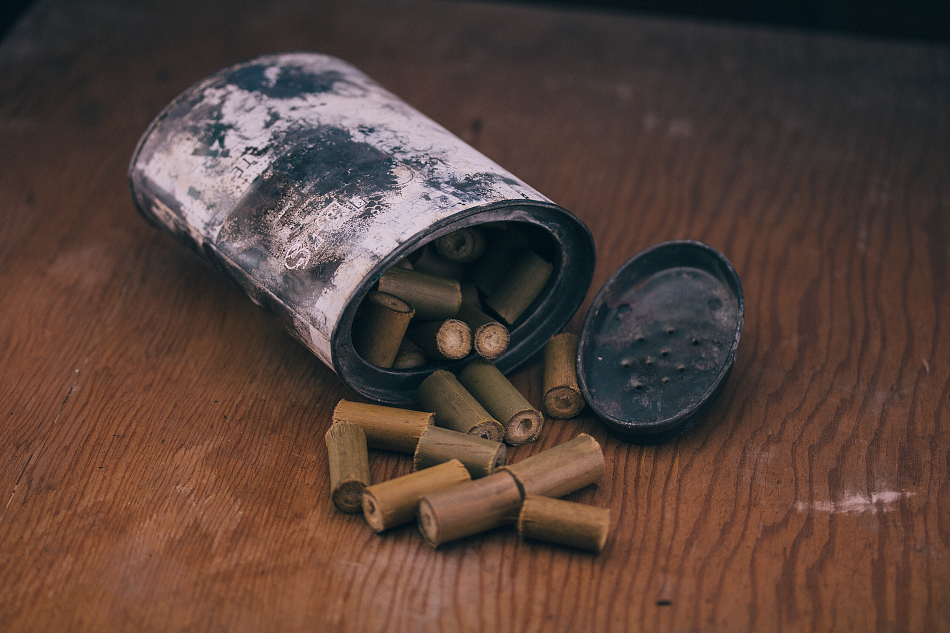
I tossed it into my fireplace, and let it heat up slowly. You'll see steam and volatile gases start to escape.
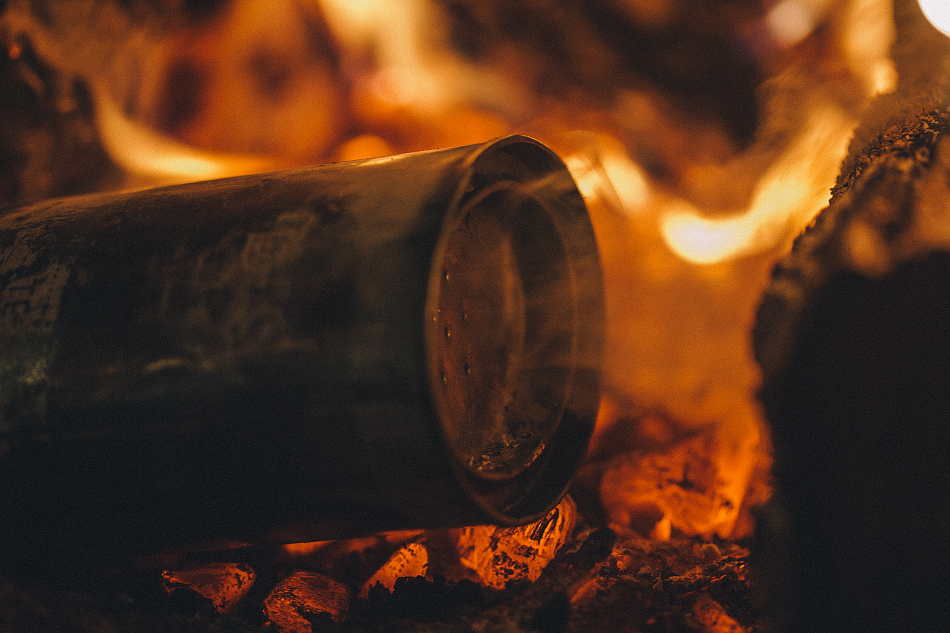
Next, the escaping gases will ignite as the tin is pushed further into the fire. Here you see the steady jet flame that is produced, it sounds like a jet too! it's important to not let this happen too quickly as the pressure may pop the top off. These gases are generally referred to as "wood gas". Some people even use wood gas to run gasoline engines!
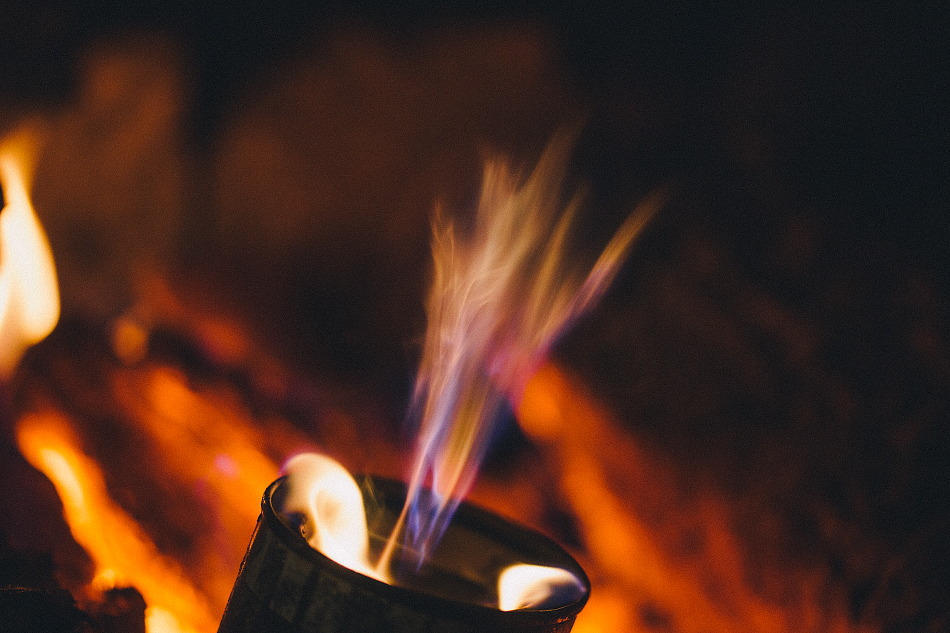
As the gases start to taper off, the tin should be pushed into the hottest part of the fire. You can monitor the escaping gases by looking at the flame produced near the punched holes in the tin.
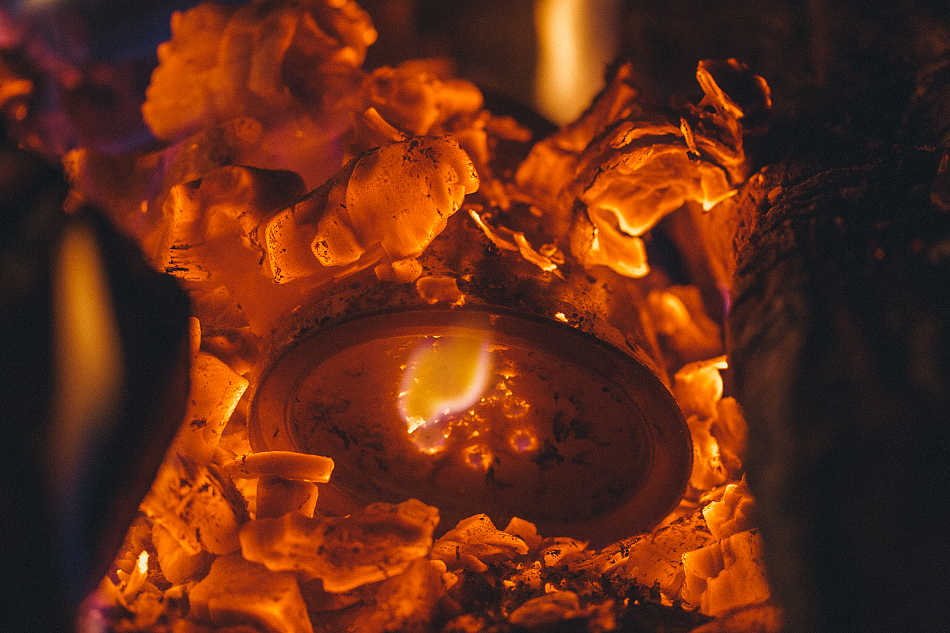
The tin needs to get red hot, the best charcoal is produced at 700-1000 °C (1292 - 1832 °F). At this carbonization temperature the fixed carbon content of the charcoal will be between 92-93 percent. This is way higher than most commercially available charcoal. This also means that the volatile content will be around 2-3%, extremely low. The remainder is made up of ash (mostly calcium).
A BBQ or hookah charcoal (coconut husk), especially the cheaper brands and compressed bricks will have a fixed carbon content of around 50-80%, with the remainder being mostly volatile mater. This volatile mater is what gives lower quality charcoal it's bad smell.
The only other charcoal on the market (that I know of) that is comparable to my bamboo charcoal is Binchōtan, http://en.wikipedia.org/wiki/Binchōtan
This is why you can't compare the taste, smell, or emissions between normal charcoal, and properly made bamboo charcoal.
Here, you see that the volatile gases have all escaped, and there is no more flame near the punched holes. The steel is bright red/orange, indicating a temperature above 700 °C inside the tin (probably close to 900 °C). I leave it in the coals for a few minutes before taking it out to let the tin cool off.
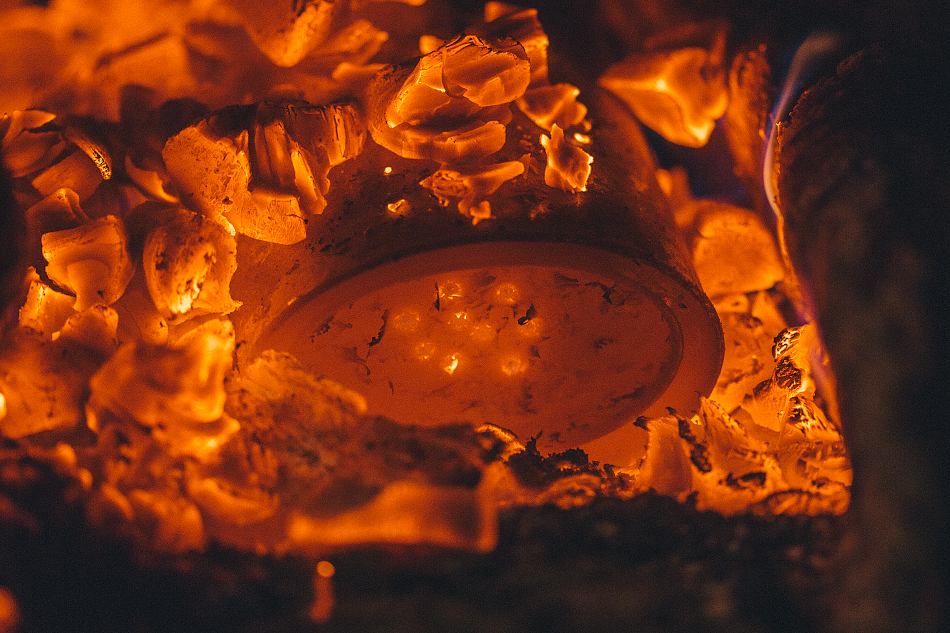
The tin must be cool to the touch before opening the lid. If the lid is opened at any time during the process, oxygen will get to the bamboo charcoals and they will start to burn.
Here is the finished charcoal, the carbonization process took about 10-15 minutes for a tin this size. The yield was 50 charcoals.
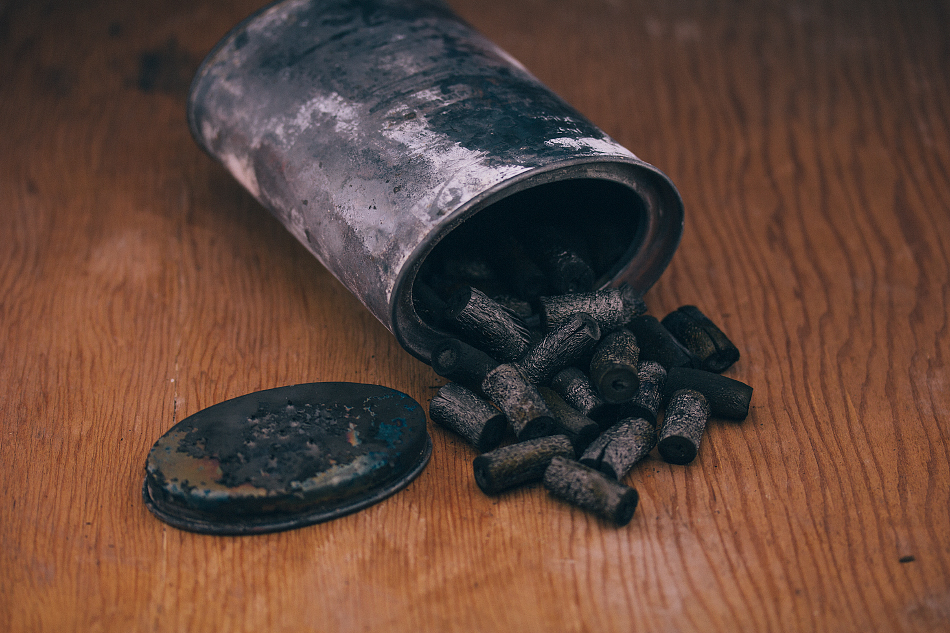
Since these are twice the length of the usual 1/2" charcoals, they are taking up much more space, but even still I am able to fit about 35 charcoals into the prototype case. Looks sweet! These charcoals are quite hard, they have a high pitched sound when you hit them. You could make wind chimes out of this stuff!
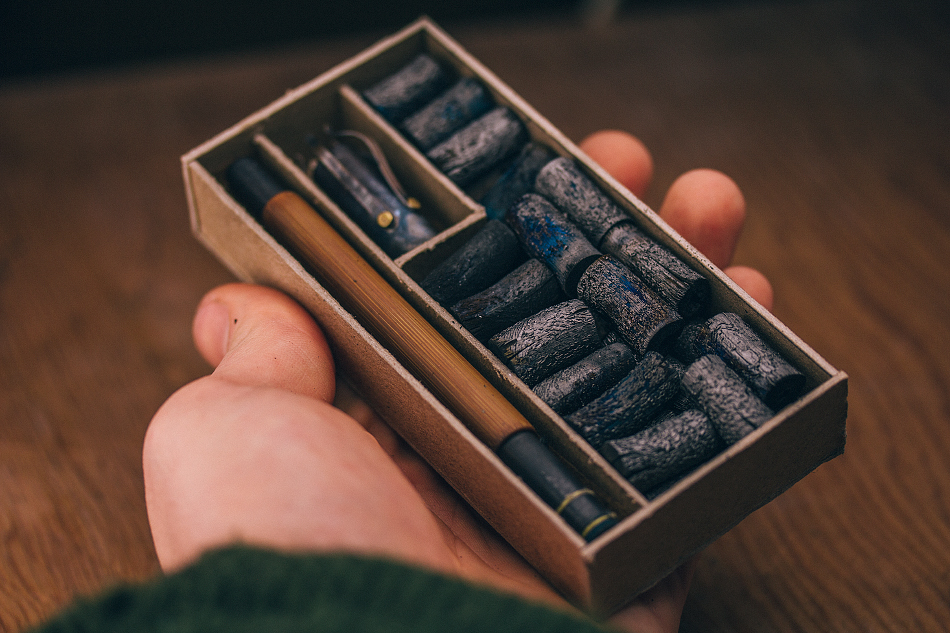
I'm not sure why there are deep vibrant blue on some of these charcoals... I assume it's some sort of thin oxide layer. They look exactly like the oxides produced on polished steel when it's heated, though.. to much lower temperatures than that used in this context. hmmm.
@Dan Morrison does that include the herbal section? Will that come out all over when carried around? Especially if it's ground fine?
Herb falling through the cracks of the lid was a concern of mine as well. I recently started keeping ground herb in little pill capsules, as they hold the perfect amount for one bowl. I keep some capsules with different herbs, such as peppermint and damiana, all together in a little jar so I can mix and match on the go. I'll probably use this same strategy with the Okin.

a question aside, does bamboo charcol actually burn smokeless?
I imagine that it would be easy enough to have a gas spectrometry reading taken from samples of your standardized processed charcoal. Anyway, no biggy here!Bamboo charcoal is indeed smokeless. The smell of any charcoal can be attributed to residual Volatile organic compounds (VOCs) that have not been evaporated out during the carbonization process. To produce a cleaner burning charcoal, you want the mass to be of a higher percentage of carbon, and a lower percentage of VOCs. The remainder of the mass is the ash content, which is made up of non-combustable minerals.
Carbonization at 700c produces a charcoal that is 92% carbon, with 3% VOCs. Fresh bamboo has a fixed carbon content of around 20%, with the remainder being VOCs, water, ash. Also compare this to bamboo charcoal carbonized at 300c, with a VOC content of roughly 30%. (These numbers are from a single study, the only study I can find regarding the composition of bamboo charcoal).
Compare this to typical BBQ charcoal which has a VOC content in the 15-30% range. These numbers account for the faint smell of some mass produced charcoals.
It's clear that the emissions and combustion characteristics of charcoal vary wildly given the varience between charcoals made from different materials, using different processes.
I have found that if carbonized at too low of a temperature (300-500c), there is a detectible smell from the bamboo charcoals resulting from the presence of leftover VOCs. Conversely, bamboo carbonized at a high temperature (800-1000c) will have no smell, but will not burn as rapidly, will have much lower porosity, with no appreciable gains in fixed carbon content or significant decrease in residule VOCs. There is also a risk, at high temperatures, for the amorphous silica content of bamboo ash to change into a crystalline form of silica. Since the inhalation of crystalline silica is associated with lung desease in high exposure environments (Industries dealing with ceramic, quartz, sand etc), I thought it would be best to avoid any possible risks here. It should be noted that cannabis also has a high silica content. I have never read any data suggesting an association with smoking organic substances, and inhaling dangerous amounts of silica.
So, bamboo carbonized at 700c is the middle ground, where the best charcoal is made, no smoke, no smell, burns and lights readily, and has the highest porosity values.
Yea, something like that. I am not worried about it. This is when you got to put your trust in Dan (but of course some digging info is good for reassurance ). I am confident he will do what's best for his clients, his daily interactions with us show how much he cares. But please remember it's just an opinion, someone who is more medically sensitive prob needs more info.
 ). The beauty, craftsmanship, and uniqueness of the Okin far outweigh any small concerns I might have as to potential health risks. And besides, this vape is not likely to become my daily driver, it's more of a once in a while, enjoying the sunset, hanging out with friends kinda vape (to me anyway).
). The beauty, craftsmanship, and uniqueness of the Okin far outweigh any small concerns I might have as to potential health risks. And besides, this vape is not likely to become my daily driver, it's more of a once in a while, enjoying the sunset, hanging out with friends kinda vape (to me anyway).I just bought a cool hat to go with my Okin. Now all I need is the Okin.and men still wear cool hats
